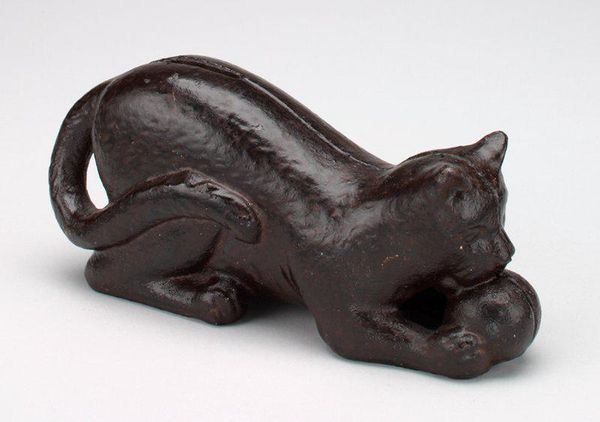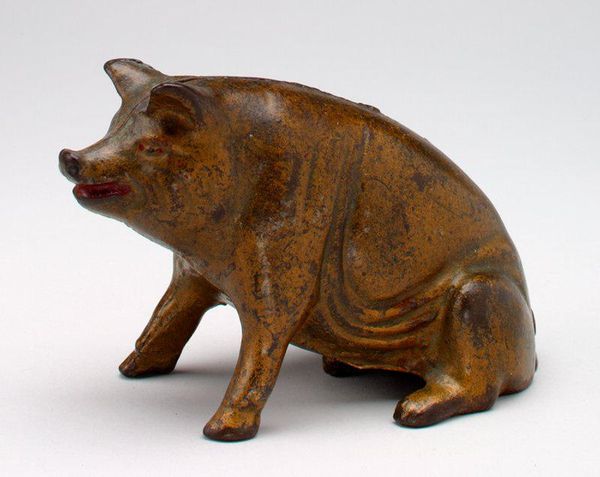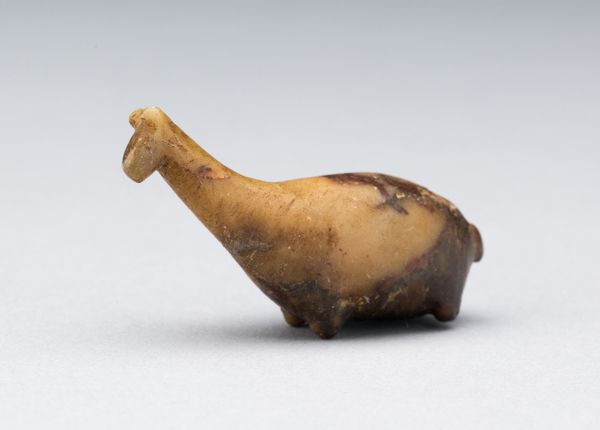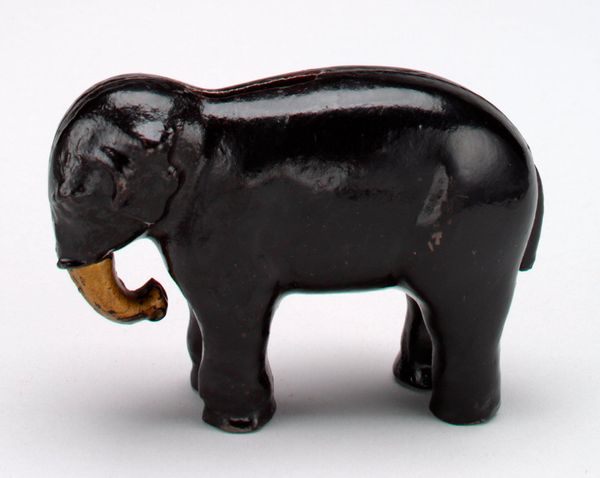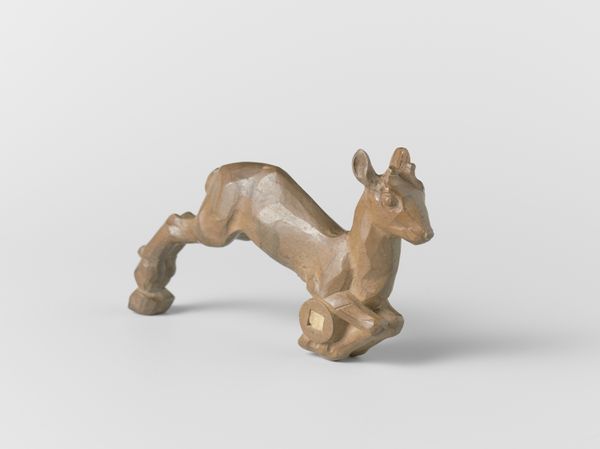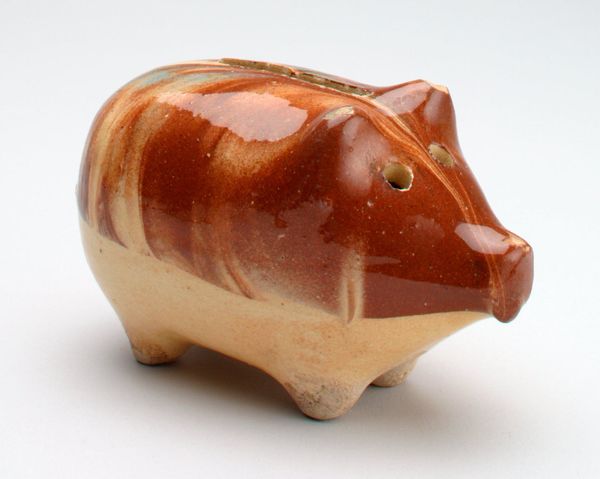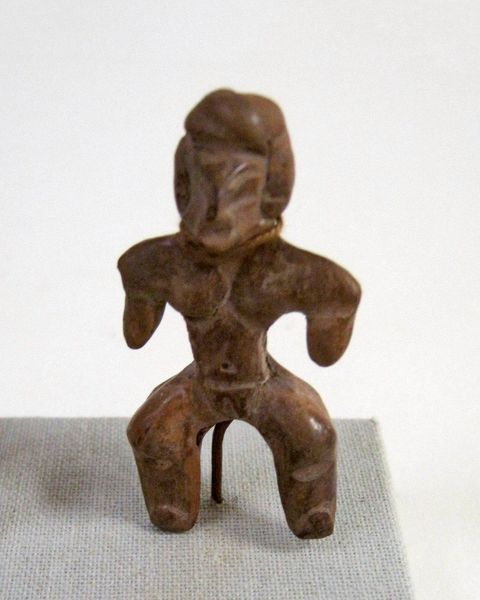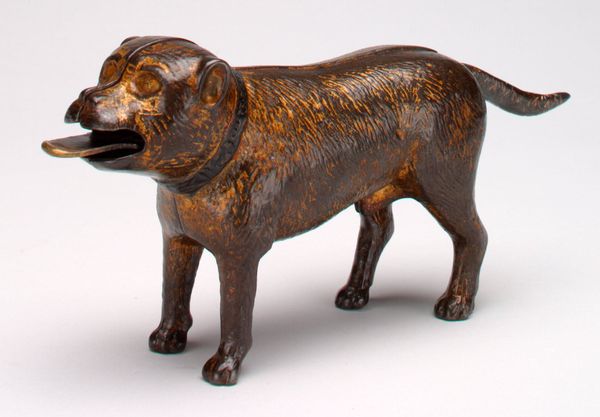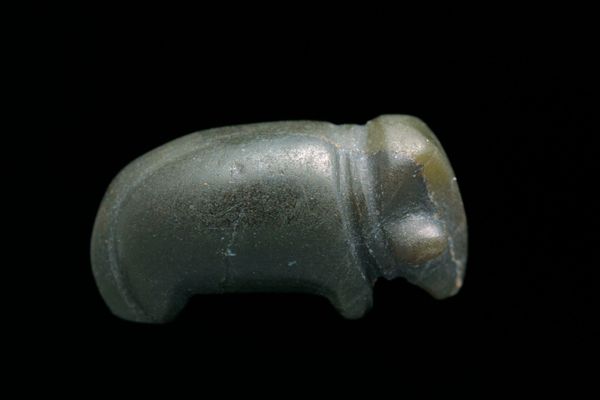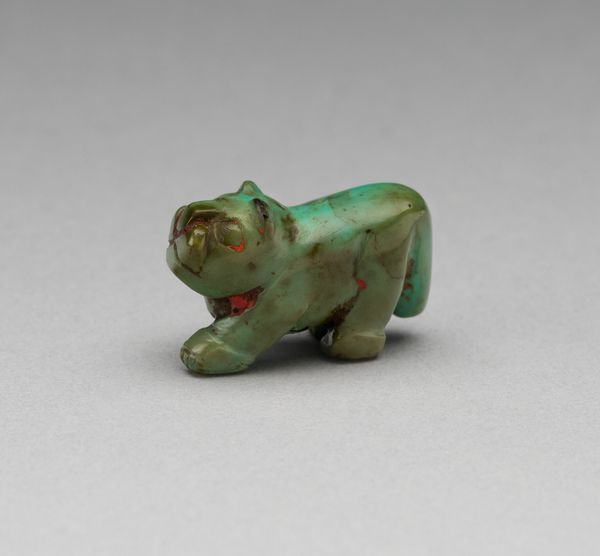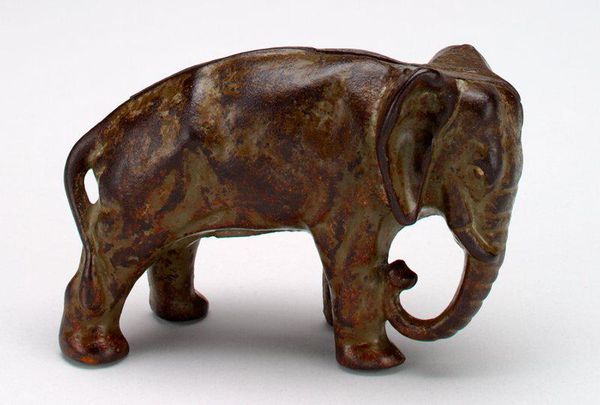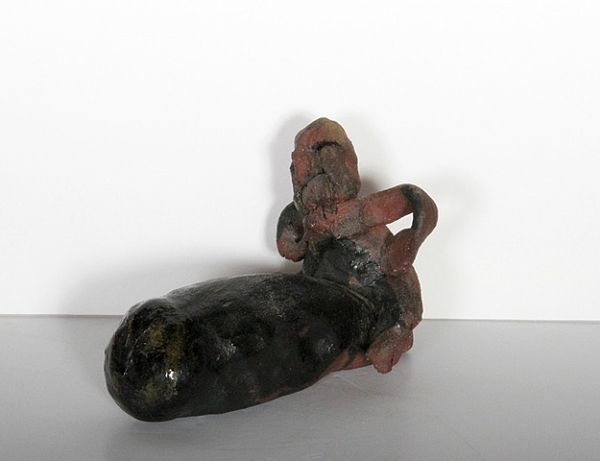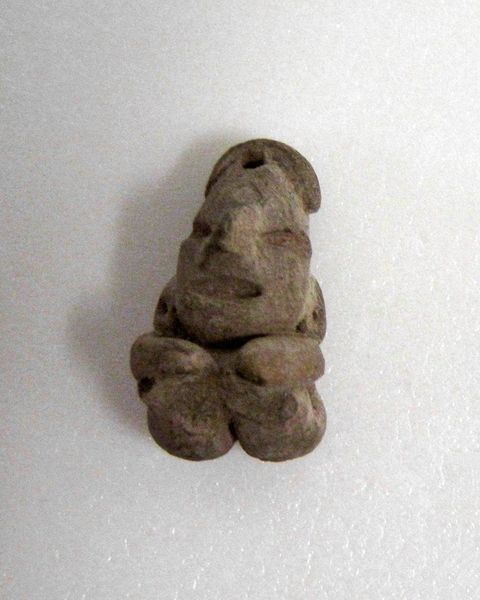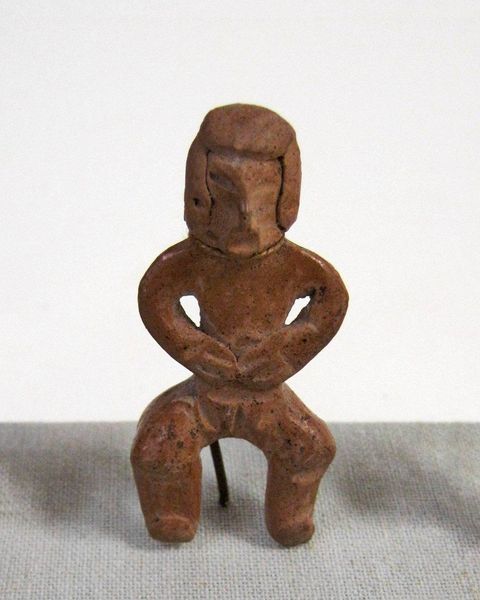
carving, sculpture
#
carving
#
figuration
#
form
#
sculpture
#
indigenous-americas
Dimensions: 1 5/8 x 2 7/8 x 3/4 in. (4.13 x 7.3 x 1.91 cm)
Copyright: Public Domain
Curator: It’s incredible to see the "Buffalo Sculpture," here at Mia, potentially of Lakóta origin. It speaks volumes even without a definitive date. Editor: I’m immediately struck by its tactile nature. It’s this beautiful, polished wood… so smooth, like worn earth. The form is simplified, almost cartoonish in its compactness. I want to hold it. Curator: That urge is telling. This piece transcends mere representation; it embodies a spiritual connection to the animal, a profound respect for the buffalo’s role in Indigenous lifeways and survival. The intersectionality of survival, art, and indigenous representation really touches on something poignant, Editor: Precisely. Looking closely, the carving marks indicate time, craft, and labor. It reminds us of the resourcefulness of Indigenous communities and also subtly protests how their skills are often disregarded or undermined by Western art conventions. The work of their hands matters. Curator: Absolutely. We can delve into the historical trauma experienced by Indigenous communities with the near extinction of the buffalo in the 19th century, disrupting their cultural and economic foundation. I think by examining its cultural place, this sculpture functions as a testament to resilience, as much as an aesthetic item. Editor: Thinking about materiality—the choice of wood isn’t arbitrary, is it? Wood connects it to the land, to a vital resource. How was it acquired, processed? Whose labor shaped it? Curator: Those are questions we can and should continue to ask. The "Buffalo Sculpture" allows us to rethink art historical narratives by centering Indigenous voices, experiences, and epistemologies that challenge hegemonic discourse. Editor: I agree. Examining the means by which such sculptures have been consumed as ethnographic artifacts also illuminates the complex histories surrounding indigeneity and art collecting practices, so too needs constant interrogation. This one really offers layered consideration, even beyond its beautiful objectness.
Comments
No comments
Be the first to comment and join the conversation on the ultimate creative platform.
